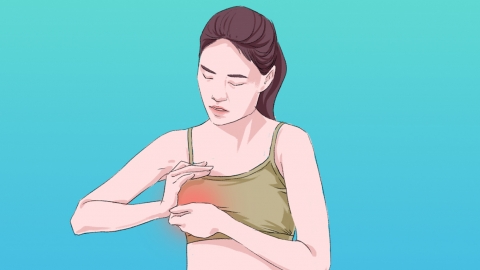How is breast hyperplasia treated?
In general, mammary gland hyperplasia may be caused by factors such as significant emotional fluctuations, hormonal changes during the menstrual cycle, simple mammary hyperplasia, cystic mammary hyperplasia, and mammary duct ectasia. It is recommended to seek timely medical consultation to identify the underlying cause and, under a doctor's guidance, improve the condition through general treatment, medication, surgical treatment, and other approaches. A detailed analysis is as follows:

1. Significant emotional fluctuations: Long-term anxiety, depression, and other negative emotions can affect the endocrine system, leading to hormonal imbalances and triggering mammary hyperplasia, accompanied by breast distension and pain. In daily life, maintaining a cheerful mood, relieving stress through exercise, listening to music, and avoiding excessive emotional fluctuations can help maintain stable endocrine function.
2. Hormonal changes during the menstrual cycle: Fluctuations in estrogen and progesterone levels before and after menstruation can stimulate breast tissue hyperplasia, causing breast distension and pain and lumps. During menstruation, attention should be paid to rest, avoiding staying up late, and reducing caffeine intake. When distension and pain are evident, local heat application can be used to relieve discomfort.
3. Simple mammary hyperplasia: Mild hyperplasia of breast tissue without significant structural abnormalities, manifested as cyclical breast distension and pain. Patients should follow medical advice to use medications such as Rupixiaopia (乳癖消片), Xiaoyaowan (逍遥丸), and Xiaojinwan (小金丸) to regulate endocrine function, alleviate distension and pain, and undergo regular breast ultrasound follow-ups to monitor the condition.
4. Cystic mammary hyperplasia: Cystic structures appear in the breast tissue, with a more severe degree of hyperplasia than simple hyperplasia, possibly accompanied by nipple discharge. In addition to following medical advice to use the aforementioned medications, if the cyst is large, breast cyst aspiration may be performed to drain the cyst fluid and relieve breast distension and pain.
5. Mammary duct ectasia: Ductal dilation and retention of secretions in the mammary gland lead to hyperplasia, possibly causing breast lumps and pain. When symptoms are mild, medications such as Runing tablets (乳宁片), Rukang tablets (乳康片), and Prunella vulgaris oral liquid (夏枯草口服液) should be used according to medical advice. If the condition is severe, mammary duct excision can be performed to remove the affected duct and improve symptoms.
In daily life, choose loose and comfortable undergarments to avoid excessive pressure on the breasts from tight undergarments, reducing breast stimulation. Maintain a regular lifestyle, avoid excessive fatigue, eat more fresh vegetables and fruits, reduce intake of high-fat and high-sugar foods, and promote breast health through comprehensive care.






